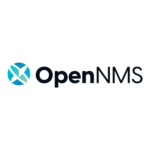NoMachine — Fast Remote Access Without the Fluff
Some tools get in the way. NoMachine doesn’t. It skips the cloud logins, skips the fancy launchers, and just gives direct, fast remote access — the kind that actually feels usable, even over weak links.
It’s built on the NX protocol. Not new, not trendy, but brutally efficient. Screen updates stay smooth, input lands where it should, and there’s no sudden freeze when the network dips. NoMachine doesn’t try to be smart — it tries to be fast.
And it usually is.
What It Actually Does (That Ends Up Being Useful)
| Feature | Why It’s Practical |
| NX Protocol Core | Compresses screen output aggressively, keeps latency low even on bad links. |
| Cross-System Connections | Windows to Linux, Linux to Windows, local or remote — doesn’t care. |
| Session Shadowing | Connects to the current desktop without logging out the active user. |
| GPU Acceleration | Uses hardware where available for smoother high-res sessions. |
| USB and File Redirection | Plug in a device or drag a file — shows up instantly on the remote side. |
| Audio Forwarding | Sends remote sound output without hassle — music, alerts, system sounds. |
| Peer-to-Peer by Default | No external relay. Just IP, open port, and a connection. |
| Adaptive Compression | Reduces quality when needed but keeps the session alive. |
When It Fits
NoMachine is a solid choice when:
– There’s a need to work on remote Linux desktops, not just look at them.
– Networks are unreliable, but responsiveness still matters.
– There’s no time to configure complex tunnels or cloud relays.
– RDP isn’t enough, and VNC doesn’t cut it.
– Cross-platform support is a must — not a checkbox.
It often ends up in labs, production environments, support departments, and anywhere the software stack is a bit messy — but uptime still matters.
How to Get It Running (In Less Time Than Reading Docs)
- Download the Right Build
Head to nomachine.com and pick the right package. Windows, Linux, macOS — everything’s there.2. Install on Host and Client
Run the installer. It starts a service automatically. No cloud setup, no agent codes.3. Connect via IP or Hostname
Open the client, enter the target’s address, select the user session. Done.4. Tweak If Needed
Adjust resolution, display quality, input behavior — all through the in-session menu. Optional, but handy.5. Use It and Forget About It
NoMachine works in the background. If it’s configured once, it stays quiet and does the job.
Final Notes
NoMachine doesn’t look modern, and that’s part of its charm. It’s focused. It’s consistent. It gives sysadmins and engineers real desktop access without license tricks or login hoops.
If the job needs to get done without lag, without cloud dependency, and without surprises — this is one of the rare tools that stays out of the way.





